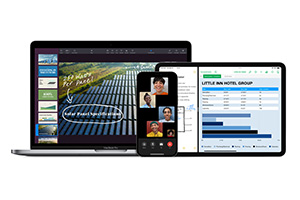4 ways Apple is reshaping the future of healthcare technology
For as long as there have been IT departments, there has been a focus on workplace modernization in the world. Giving people new and emerging...
2 min read
Jason Manlig : Mar 1, 2021 4:00:00 AM

No matter what line of work you’re in, it’s never a bad idea to make a strategic investment in workplace modernization. The logic behind this is easy to understand. When you give people the newest, most powerful, most intuitive technology on the market, you equip them to be more productive and, ultimately, to show better results. That’s valuable in any industry – but especially so in healthcare, where it can literally save people’s lives.
We’ve been through a major public health crisis over the past year, and it’s led healthcare organizations to realize: The future of care is in their hands. They have the potential to steer things in the right direction, but they need the right technology to do it. And the truth is, care providers deliver the best possible care when they have the powerful, intuitive tools.
That’s the value of Apple in the healthcare workplace. Apple technology enables health professionals to work effectively within hospitals, connect remotely with patients, and conduct ground-breaking medical research. The result is that care that becomes more efficient, more personalized, and ultimately, more human.
iPad in particular has the potential to really help healthcare pros shine in their roles. iPad is light, it’s compact, and it’s easy to use – and it’s revolutionizing the way people do work in the medical field. Today, let’s take a look at four specific ways that iPad can deliver enhanced experiences for both healthcare professionals and their patients:
All of these benefits and more are available for your healthcare organization to unlock today. With Apple, there’s no limit to what healthcare professionals can accomplish – and to get started, all you have to do is connect with the Apple specialists at Zones. Reach out to us today, and you’ll find out firsthand what the power and innovation of Apple can do for you.

For as long as there have been IT departments, there has been a focus on workplace modernization in the world. Giving people new and emerging...

While everyone in the world of work has been under a lot of stress this year, the healthcare sector is one area that’s had a particularly rough go of...

It’s been a tumultuous year for businesses all over the world, and it’s led many corporate leaders to realize something: that workplace...